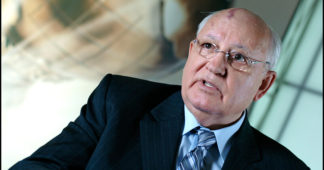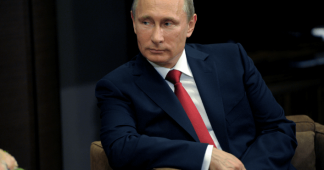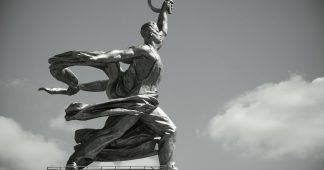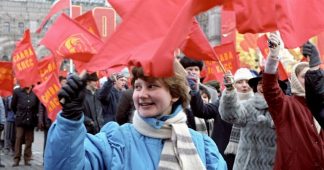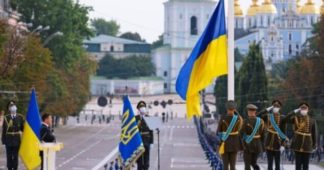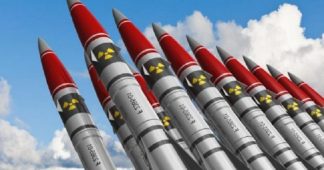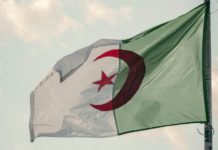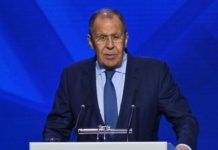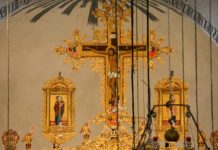It has been called the “Vopros Veka.” And certainly it will be debated by politicians, scholars, and other intellectuals for at least another 100 years.
But it is important to try to find a rational explanation now because false and mythical explanations of why the Soviet Union ended are being used for bad political purposes in many countries, including Russia and America.
To answer the question for myself, in addition to my own research, I read every explanation I could find in English and in Russian –in dozens of books and articles.
Having published my findings and my own analyses in my book VOPROS VOPROSOV, I will only summarize them very briefly today.
* * *
I must begin with two problems I found in the explanatory literature:
— First, the question is often badly formulated. For example, many authors ask why the Soviet Union “collapsed,” implying that the causes were inherent in the system. But the Soviet Union did not “collapse” in December 1991. Other authors say that the Soviet system was “unreformable,” but in fact it was reformed at least three times in its history. In the 1920s, under NEP. In the 1950s and early 1960s under Khrushchev. And again, most fundamentally, under Gorbachev from 1985 to 1991,
— The second problem is that while almost every author is fully certain about his or her explanation of the end of the soviet union, there is no agreement among these authors. Instead, there are no less than nine or ten different explanations.
— Some of these explanations are simply incoherent or silly/ so I will focus on only seven, all of them widespread and influential.
I. First, the end of the Soviet Union was “inevitable,” predetermined by some genetic defect — either, for example, its “illegitimate” birth in 1917-1921 or its “socialist” nature.
II. This explanation is simply ideological, even theological, and thus non-empirical. It cannot be verified, and therefore it is of no value.
The second explanation is also “genetic” but more serious: The Soviet Union was an empire, and “all empires die.” This may seem plausible, but there are at least three problems:
1. Leading specialists on Soviet nationalities disagree as to whether the Soviet Union was actually an empire or a multi-ethnic state.
2. This explanation often (and incorrectly) conflates the Soviet Union with its actual empire in Eastern Europe.
3. The Soviet Union did not end like traditional empires end — as a result of war and crises on its “colonial” periphery (for example. Central Asia). instead, it was abolished by its own center or Metropolis by Moscow under Yeltsin.
III. According to the third explanation, the Soviet Union fell victim to two anti-Soviet revolutions from below — a democratic revolution in Russia itself; and a nationalist revolution in the other Soviet republics. But neither of these generalizations is factually correct.
—- By 1991, popular opposition to one-party Communist rule in Russia was substantial and growing, but there was little popular opposition to other fundamental elements of the Soviet system. Opinion surveys and voting results at the time showed, for example, that 75 to 85 percent of Russians strongly supported the cradle-to-grave welfare system; a regulated market, including subsidized prices for housing and consumer goods; and the Union.
As for the other Soviet republics, popular secessionist movements from below existed in 1991 only in the three Baltic republics, Georgia, and perhaps Western Ukraine. (And these areas represented only about 5 percent of the Soviet Union’s total territory, populace, and resources.)
In short, there were no all-union revolutions from below in the Soviet Union in 1991. (The notion that there was a democratic revolution in Russia in August 1991 is also a myth.)
IV. According to the fourth explanation, the Soviet Union ended because its economy collapsed. Here too there are three problems:
1. No respected professional economists hold this view.
2. No modern state has perished due to economic crisis. For example, both the American state in the 1930s and the post-Soviet Russian state in the 1990s survived much worse economic crises.
3. And the Soviet economic crisis of 1990-1991 has been greatly exaggerated, partly for political reasons. (It was, for example, not a crisis of production but of distribution.)
V. The fifth explain is very widespread in Russia but scarcely exists in the West: As had happened before to reformers in Russian history, the radical intelligentsia hijacked Gorbachev’s gradualist reforma¬tion (Perestroika) and their extremism led to the destruction of the Soviet system.
I agree that the radical wing of the intelligentisa played an important and often irrational role from 1989 to 1991, but its role in the end of the Soviet Union was at most secondary and indirect.
The main contribution of the radical intelligentsia was to undermine Gorbachev’s leadership at critical moments and to help Yeltsin rise to power.
VI. That brings me, sixth, to what I think was one of the two truly essential factors leading to the Soviet breakup: The role of two leaders — Gorbachev and Yeltsin.
— This is a complex factor that requires considerable context and nuance, but to state it simply:
It was a historical happenstance that two extraordinary leaders appeared on the Soviet political scene at exactly the same time — Gorbachev, a man with an extraordinary will to reform; and Yeltsin, a man with an extraordinary will to power.
Or to state this explanation in narrative form: without Gorbachev’s remarkable commitment to democratic reform, there would have been no Yeltsin. And without Yeltsin’s remarkable will to power, there would have been no meeting in the Belovezh Forest — on December 8, 1991 — to abolish the Soviet state.
VII. But seventh (and finally), we need an additional explanation; Why did the top Soviet state (not party) nomenklatura permit Yeltsin to abolish its own state, which had given it so much power and privi¬lege for so long?
The answer is. those elites, in Russia and in other republics, were already seizing the great wealth of the Soviet state. They were now motivated by a will to property ownership.
For this, of course, they no longer needed the old state or its salvation,
Thus ended the Soviet state. And thus began the corrupt history of its Russian successor.
* * *
In short, the combination and interaction of these three factors Gorbachev, Yeltsin, and the property-seeking elites — explain the end of the Soviet Union. None of these factors were, of course, inevitable. Nor was the result.
We may debate their relative weight in the outcome.
But minus any one of these three factors, the Soviet Union, in some form, would almost certainly still exist today.
Published at www.gorby.ru
We remind our readers that publication of articles on our site does not mean that we agree with what is written. Our policy is to publish anything which we consider of interest, so as to assist our readers in forming their opinions. Sometimes we even publish articles with which we totally disagree, since we believe it is important for our readers to be informed on as wide a spectrum of views as possible.
